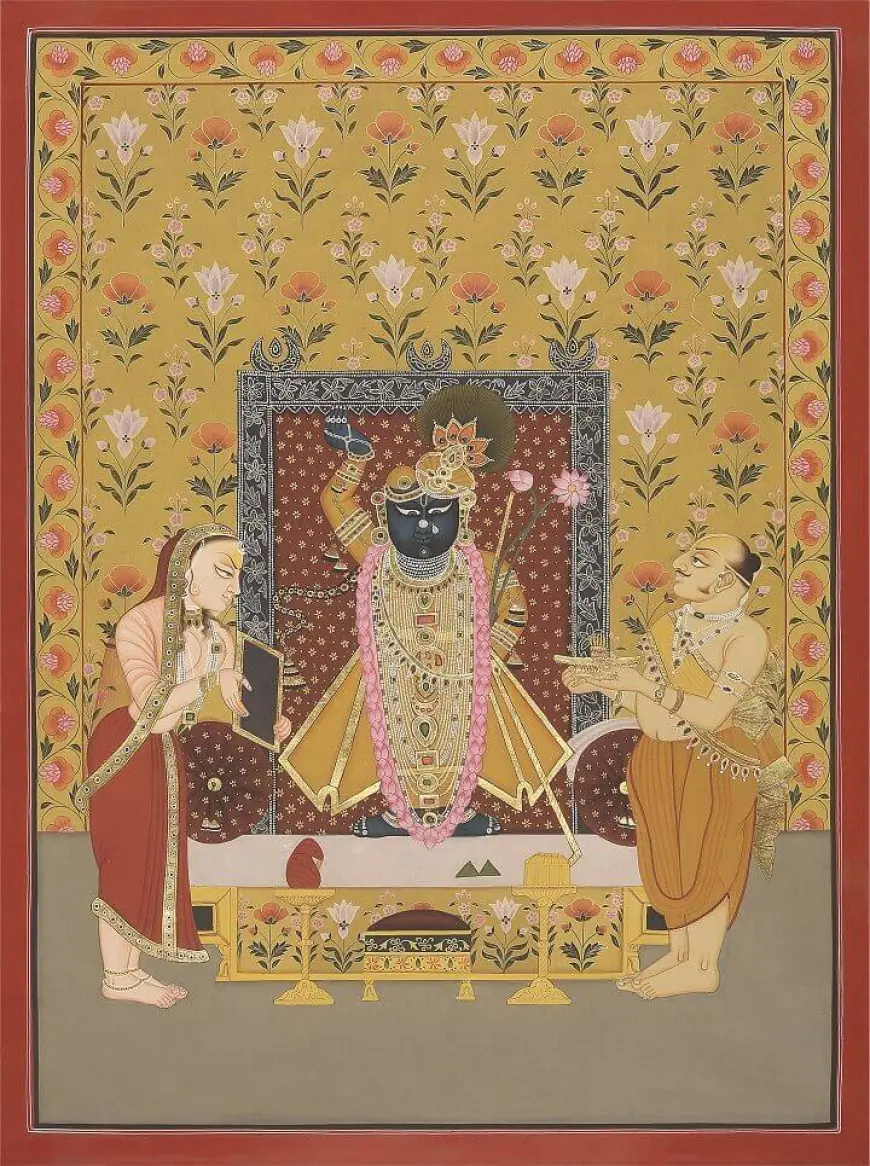Exploring the Legacy of the Mughal Style of Painting in India
The Mughal Style of Painting is one of the most refined art traditions of India, flourishing under emperors like Akbar, Jahangir, and Shah Jahan. Known for its realism, these paintings beautifully combined Persian elegance with Indian creativity, making them unique visual records of royal life, battles, gardens, and poetry. Artists paid extraordinary attention to detail — from delicate flowers and expressive faces to rich costumes and jewelry. Even devotional art forms like Pichwai have absorbed Mughal influences, blending grace with spirituality. Today, this style continues to inspire modern artists, textile designs, and illustrations. The Mughal Style of Painting is more than history; it is a living legacy of patience, storytelling, and cultural fusion that still captivates admirers worldwide.

A Glimpse into History
There are very few art forms in India that carry as much grace and detail as the Mughal Style of Painting. Born during the height of the Mughal Empire, these paintings were not just decorative pieces but also visual records of royal life. From court scenes and battles to gardens and poetry, every brushstroke told a story. What makes them so fascinating is the blend of Persian refinement with Indian creativity — a true cultural fusion that continues to inspire artists even today.
What Makes Mughal Paintings Unique
Unlike many traditional Indian paintings, the Mughal Style of Painting placed a lot of emphasis on realism. The artists paid close attention to facial expressions, clothing folds, and even the tiniest details of jewelry. Scenes often featured emperors like Akbar, Jahangir, or Shah Jahan surrounded by courtiers, poets, or musicians. Nature too was a recurring theme — you’ll often find delicate flowers, graceful birds, and lush gardens framing the central figures.
The Human Touch Behind the Art
What I personally love about the Mughal Style of Painting is the patience and discipline it required. Artists sometimes spent weeks, even months, working on a single miniature. The brushes were so fine that even a single strand of squirrel hair could be used to paint the smallest details. When you stand before one of these works, it doesn’t just feel like art — it feels like stepping into another world, a frozen moment in time.
Influence on Indian Art and Cultur
The Mughal emperors were great patrons of the arts, and because of them, this style spread far and wide. Today, the Mughal Style of Painting continues to influence contemporary art forms, from textile patterns to modern illustrations. Even Pichwai paintings, which were originally devotional, have absorbed some of this elegance. A wonderful example of preserving such traditions can be seen in Pichwai Art by Pooja Singhal, where age-old motifs are given a fresh, innovative presentation.

Why It Still Matters Today
In today’s world of fast visuals and digital media, looking at a hand-painted Mughal miniature feels like a breath of fresh air. It reminds us of a time when art was not rushed but crafted with devotion and care. The Mughal Style of Painting continues to be cherished not only by collectors and historians but also by anyone who values beauty, patience, and storytelling in its purest form.
Conclusion
The Mughal Style of Painting is more than just a chapter in India’s art history — it is a timeless reminder of how creativity can bring together different cultures and leave a legacy for generations. Whether displayed in museums or reimagined in modern art, these paintings still speak to us, centuries later.
What's Your Reaction?
 Like
0
Like
0
 Dislike
0
Dislike
0
 Love
0
Love
0
 Funny
0
Funny
0
 Angry
0
Angry
0
 Sad
0
Sad
0
 Wow
0
Wow
0


















































